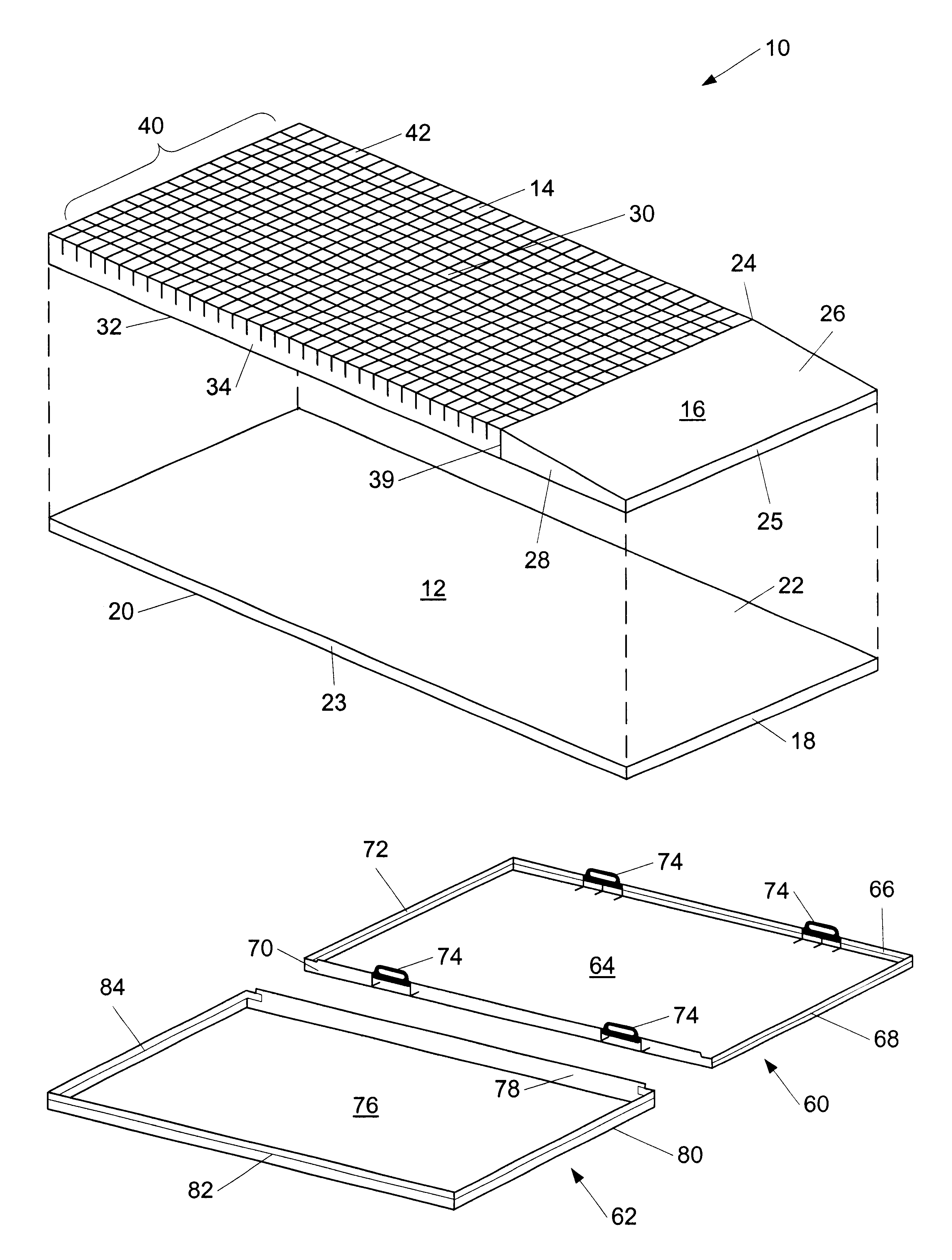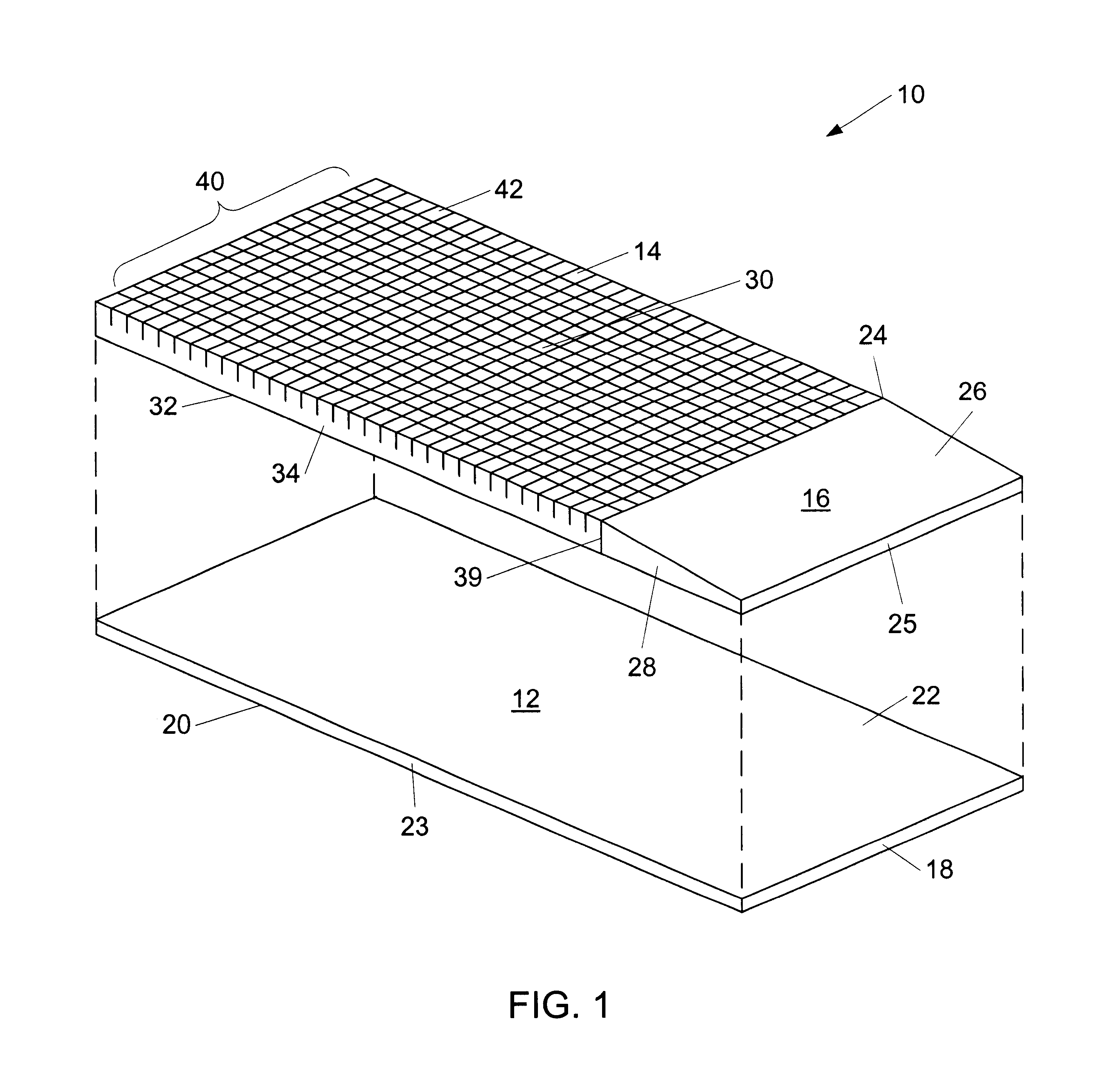Mattress with semi-independent pressure relieving pillars
a mattress and semi-independent technology, applied in the field of mattresses, can solve the problems of tissue decay and ulcer formation, inconvenient manufacturing, and increased risk of decubitus ulcer formation, and achieve the effect of alleviating or minimizing the occurrence of decubitus ulcers, and being easy and relatively affordable to manufactur
- Summary
- Abstract
- Description
- Claims
- Application Information
AI Technical Summary
Benefits of technology
Problems solved by technology
Method used
Image
Examples
example 1
A piece of foam approximately 35″×64″×5″ deep, having the proper characteristics is selected. The following steps are performed upon the foam:
1. Place foam flat on cutting surface.
2. Align foam to be parallel with cutting wires so that the foam is centered along the width of wires.
3. Lower the hot cutting wires 2″ into the foam; these wires are preheated to a suitable temperature by electric current.
4. If desired leave the heated wires in place momentarily after the desired depth has been reached.
5. Raise the cutting wires out of the foam.
6. Rotate the foam 90 degrees and repeat steps 1-5.
The cut foam is now a body support cushion, and assembled as part of a completed mattress embodying the present invention.
example 2
A piece of foam is treated in accordance with Example 1. This piece of foam is then rotated so that the cut side is downward. The following steps are then performed upon the foam:1. Place foam flat on cutting surface.2. Align foam to be parallel with cutting wires so that the foam is centered along the width of wires.3. Lower the hot cutting wires 2″ into the foam; these wires are preheated to a suitable temperature by electric current.4. If desired leave the heated wires in place momentarily after the desired depth has been reached.5. Raise the cutting wires out of the foam.6. Rotate the foam 90 degrees and repeat steps 1-4.
The cut foam is now a body support cushion having two opposed arrays of semi-independent pillars. It may now be assembled as part of a completed mattress embodying the present invention.
PUM
 Login to View More
Login to View More Abstract
Description
Claims
Application Information
 Login to View More
Login to View More - R&D
- Intellectual Property
- Life Sciences
- Materials
- Tech Scout
- Unparalleled Data Quality
- Higher Quality Content
- 60% Fewer Hallucinations
Browse by: Latest US Patents, China's latest patents, Technical Efficacy Thesaurus, Application Domain, Technology Topic, Popular Technical Reports.
© 2025 PatSnap. All rights reserved.Legal|Privacy policy|Modern Slavery Act Transparency Statement|Sitemap|About US| Contact US: help@patsnap.com



